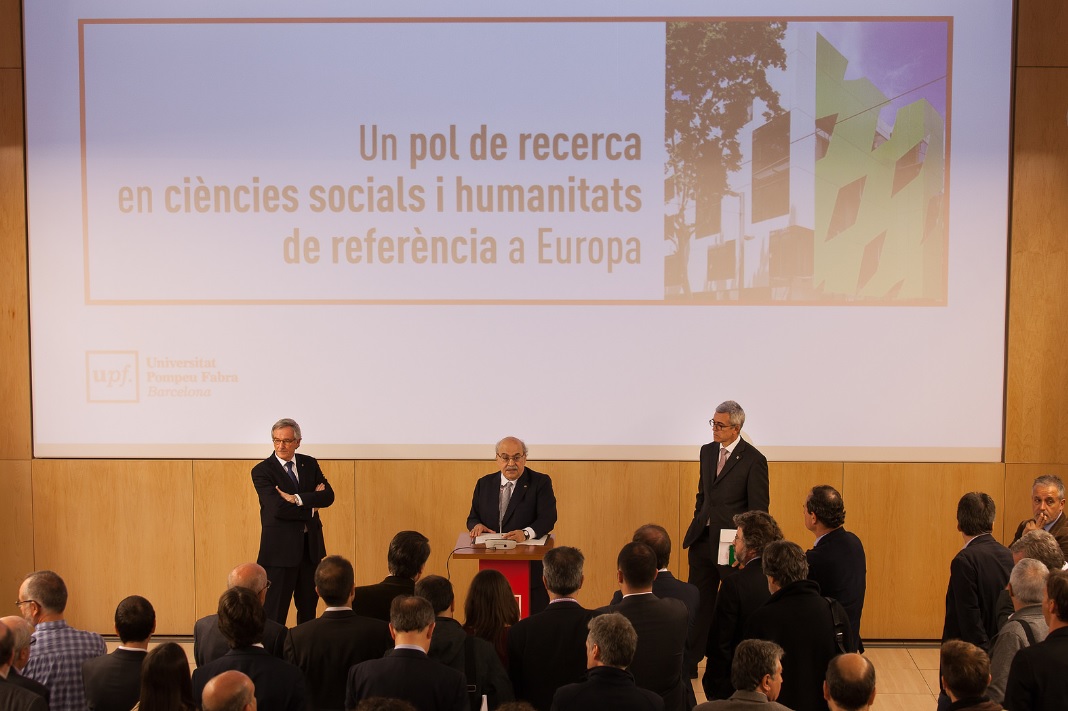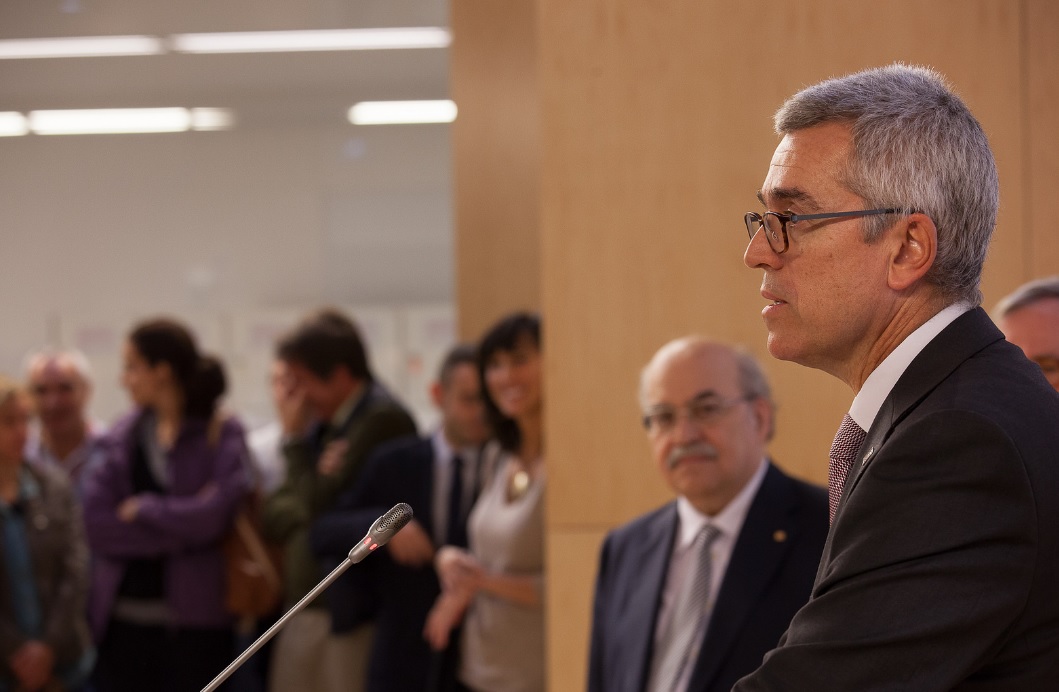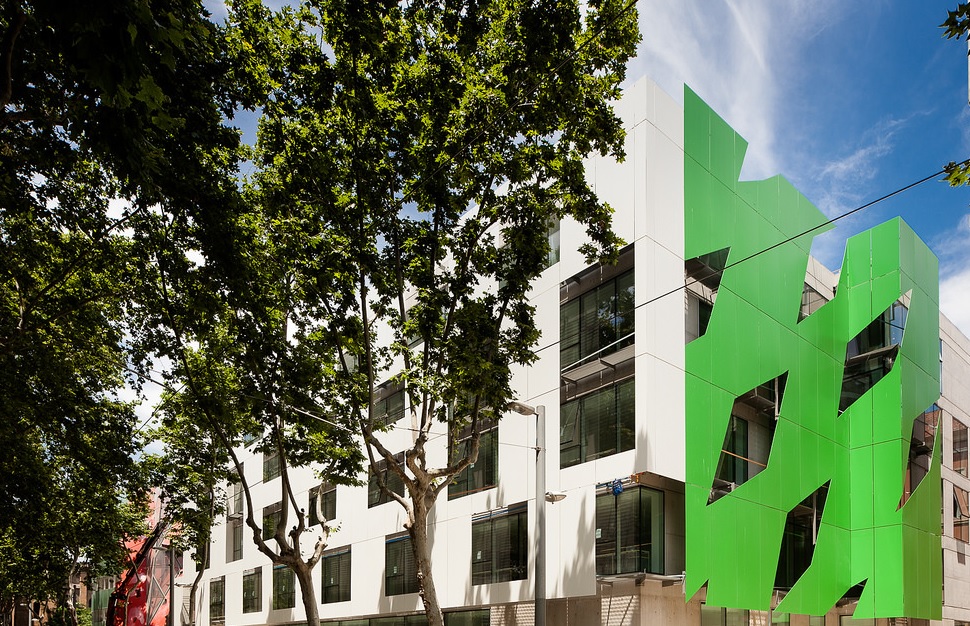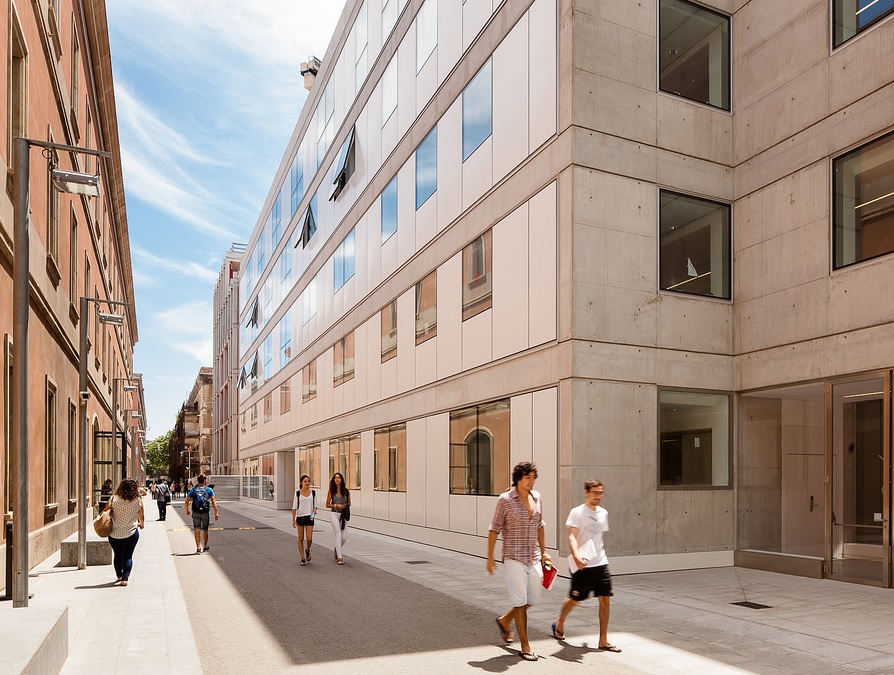The new UPF Research Park building is inaugurated
The new UPF Research Park building is inaugurated
 The new UPF Research Park building, located on the Ciutadella campus, was inaugurated this morning. The event was attended by Xavier Trias, mayor of Barcelona, and Andreu Mas-Colell, Minister of Economy and Knowledge of the Government of Catalonia. It was also attended by Juan Navarro Baldeweg, the project's chief architect, who was recently awarded the National Prize for Architecture by the Ministry of Public Works.
The new UPF Research Park building, located on the Ciutadella campus, was inaugurated this morning. The event was attended by Xavier Trias, mayor of Barcelona, and Andreu Mas-Colell, Minister of Economy and Knowledge of the Government of Catalonia. It was also attended by Juan Navarro Baldeweg, the project's chief architect, who was recently awarded the National Prize for Architecture by the Ministry of Public Works.
The new facilities, with an area of 8,700 square metres, complement the existing building, which was opened in July 2008. According to Jaume Casals, rector of the UPF, the entire UPF Research Park "was created with the aim of occupying a key position on the map of research and knowledge transfer in the field of social sciences and humanities, bringing together university research groups, internationally renowned joint centres and prestigious institutions in one single space."
 The University is committed to the creation of this shared physical space that enhances the interaction of this entire critical mass of knowledge in order to become a benchmark for research in Europe. This was reaffirmed by Andreu Mas-Colell: "this building is further proof that we can offer to show that we are making a strong commitment in the field of social sciences and humanities". Meanwhile, Xavier Trias highlighted the value of the building to the city of Barcelona as a whole, and declared that he was convinced that it will become a benchmark for the country.
The University is committed to the creation of this shared physical space that enhances the interaction of this entire critical mass of knowledge in order to become a benchmark for research in Europe. This was reaffirmed by Andreu Mas-Colell: "this building is further proof that we can offer to show that we are making a strong commitment in the field of social sciences and humanities". Meanwhile, Xavier Trias highlighted the value of the building to the city of Barcelona as a whole, and declared that he was convinced that it will become a benchmark for the country.
The entire project has been financed by funds from the Catalonia Competitiveness Programme (Feder-2007/2013), and the ACTEPARQ and Innocampus calls by the former ministries of Science and Education.
Groups, institutions and centres of excellence located in the new building
The sharing of the space by centres and groups specializing in different disciplines will enable them to address issues of social interest such as the design of institutions and markets, monetary and fiscal policy, the labour market and unemployment, finance, strategy and rationality, and policies of dependence, equality, education, immigration and health, from various standpoints. The research lines resulting from these synergies will provide a better understanding of social mechanisms and will therefore provide a guide for both the implementation of public policies and for decision making in the economic and social spheres.
- Barcelona Graduate School of Economics (Barcelona GSE)- Behavioral Science Lab (BES_Lab)
- Complexity and Socio-Ecologial Dynamics (CaSEs)
- Research Centre for International Economics (CREI)
- Centre for Research in Health and Economics (CRES)
- Sociodemographics Research Group (DEMOSOC)
- Health Inequalities Research Group - Employment Condition Networks (GREDS-EMCONET)
- Interdisciplinary Research Group on Immigration (GRITIM)
- Barcelona Institute of International Studies (IBEI)
- Institute of Political Economy and Governance (IPEG)
- Johns Hopkins University-Universitat Pompeu Fabra Public Policy Centre (JHU-UPF PPP)
- Research and Expertise Centre for Survey Methodology (RECSM)
- UPF-Barcelona School of Management (UPF-BSM)
- UPF-IDEC
Architectural outline by Juan Navarro Baldeweg
The project follows the urban planning guidelines which were proposed when the ideas from the tender for the entire block were presented in 1996. The proposal defined a layout of three interconnected modules, creating a very slight concavity towards the Ciutadella Park.
The building that has been inaugurated is the central module, which is the largest, and is separated from the other two by narrow courtyards opening onto carrer Wellington, where some coloured parasols have been placed to create a dialogue between the buildings and to visually animate these connecting areas, while providing a filter from the sun.
The block consists of three buildings dedicated to research which create a uniform series of modules with different images, although they have been formally conceived as complements to each other. The building has a double skin façade overlooking the Ciutadella Park. The outer shell of white lacquered aluminium has large rectangular openings that allow viewing while at the same time providing protection and toning down the strong sunlight. These areas are free of the usual details, which are on the windows hidden behind it. This mask gives the building a uniform luminous shell, and plays with the red and green filters from the open courtyards between modules. Towards the interior street that borders the building, the closure is more conventional, with a façade of large windows, which do not require special protection from the sun due to their orientation, and composite modular aluminium elements which are also lacquered in white.
 This building houses the functional programme on five floors above ground level, in addition to an attic and a basement. The programme of individual offices for researchers and classrooms is distributed on the floors above ground level. A shared lobby area facing westwards has an open staircase connecting all the floors. Due to the transparency of the façade that surrounds this area, the red parasols on the western module are visually incorporated into the building. The shared rest areas are located in this vertical open lobby area. A large space that unifies the various activities taking place in the centre is thus obtained.
This building houses the functional programme on five floors above ground level, in addition to an attic and a basement. The programme of individual offices for researchers and classrooms is distributed on the floors above ground level. A shared lobby area facing westwards has an open staircase connecting all the floors. Due to the transparency of the façade that surrounds this area, the red parasols on the western module are visually incorporated into the building. The shared rest areas are located in this vertical open lobby area. A large space that unifies the various activities taking place in the centre is thus obtained.
One area of particular value is the events hall and large meeting room which can accommodate 160 people as an amphitheatre, and around 50 as a meeting room. Natural light enters the entire building, including this events and hall and meeting room, located in the basement. The rest of the basement has area for common activities such as seminars and multi-purpose rooms, which are well lit by the courtyards that vertically cross the structure at ground level.
Image gallery of the inauguration
Created with flickr slideshow.
